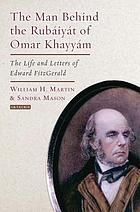Yet more light on Umar-i-Khayyam. Browne, E.G. Journal of the Royal Asiatic Society, (1899), pp. 409-420
“As Mr. Beverldge has referred to my criticism (which is in reality not mine, but Professor A. Müller’s, cited by Professor Houtsma in a footnote on pp. xiv-xv of his edition of al-Bundárí’s History of the Seljúqs) on the now familiar story of ‘Umar’s covenant with the Nidhámu’l-Mulk and Hasan-i-Sabbah, I should be glad to have an opportunity of stating that my recent reading has shown me that this tale at least reposes on more ancient and respectable authority than either the Rawdatu-s-Safá or the Táríkh-i-Alfí, namely, on that of the Jámi’ú’t-Tawáríkh of Rashídu’d-Dín, who was put to death in a.h. 718.”

